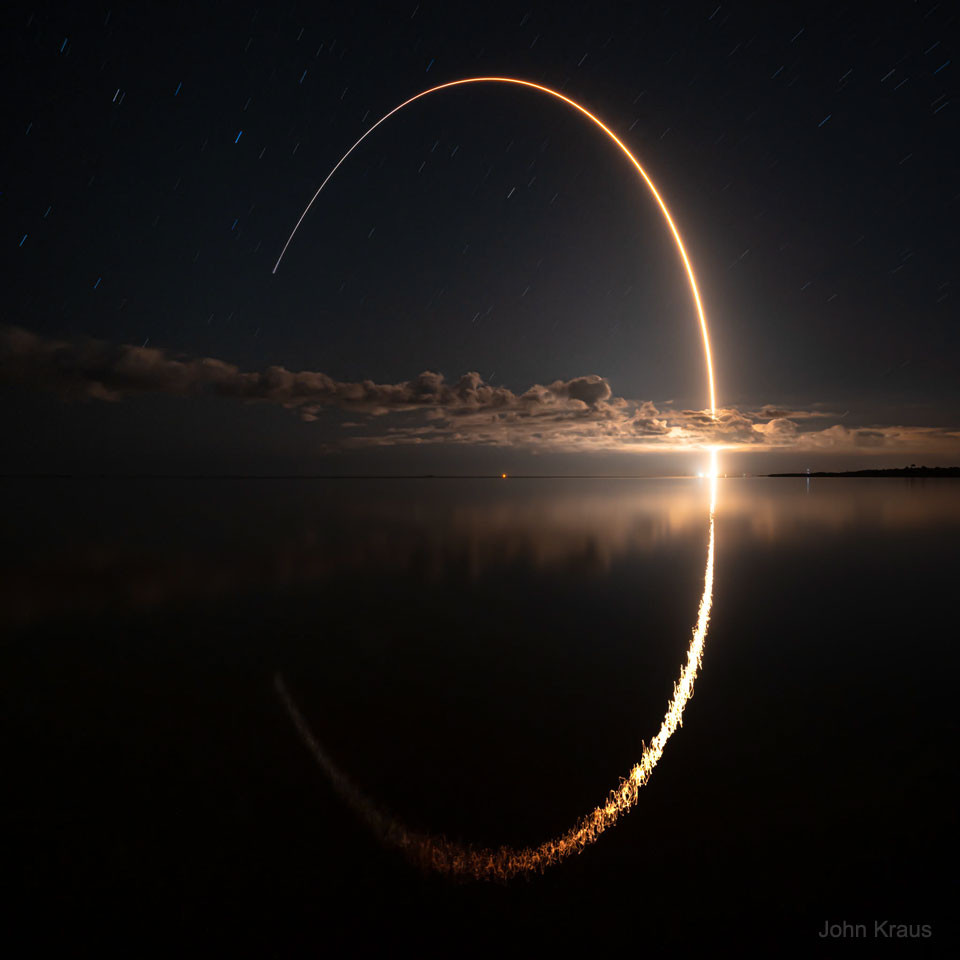2021年10月20日
Lucy Launches to Eight Asteroids
Image Credit & Copyright: John Kraus
Explanation: Why would this mission go out as far as Jupiter — but then not visit Jupiter? Lucy’s plan is to follow different leads about the origin of our Solar System than can be found at Jupiter — where Juno now orbits. Jupiter is such a massive planet that its gravity captures numerous asteroids that orbit the Sun ahead of it — and behind. These trojan asteroids formed all over our Solar System and some may have been trapped there for billions of years. Flying by these trojan asteroids enables studying them as fossils that likely hold unique clues about our early Solar System. Lucy, named after a famous fossil skeleton which was named after a famous song, is scheduled to visit eight asteroids from 2025 to 2033. Pictured, Lucy’s launch was captured with reflection last week aboard a powerful Atlas V rocket from Cape Canaveral, Florida, USA.
Tomorrow’s picture: open space
露西号启程前去探访8颗小行星
影像提供与版权: John Kraus
说明: 为何这项任务探索的区域远及木星轨道,却不造访木星呢?因为露西号设定的任务目标不同,着眼于探索太阳系的起源,而所求的线索在朱诺号目前绕行的木星缺如。不过,木星的质量是如此庞大,其重力俘获许多小行星,让它们在绕行太阳的轨道上,运行在木星的前方与后方。而这些特洛伊族小行星,来自太阳系的各个区域,有些可能已陷落在此处达数十亿年之久。因此,飞越探索这些如同太阳系化石的特洛伊小行星,有机会找到攸关早期太阳系的独特线索。以著名露西(源自一首名曲)人猿骨骼化石为名的露西号,预定在2025年到2033年之间造访8颗小行星。上面这幅带着水面倒影、摄于上星期的影像,记录了推送露西号的大力神五型火箭从美国佛罗里达州卡纳维尔角发射的景象。
明日的图片: open space







